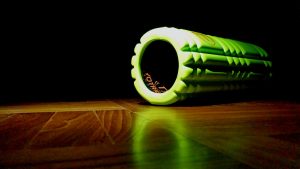Exercise can be dangerous. You always want to be sure you’re treating your body right before, during, and after a workout. Foam rolling and stretching are both important ways to loosen your muscles and promote recovery.
Stretching is usually the first thing people do when they exercise. Though some people don’t stretch at all. In the past, it was widely believed that stretching was crucial before exercise because it made the muscles more flexible. It also prevented an injury. The reality is that studies and research have shown that if stretching does these things, it is so minimal that it might not even matter.
Warming up before exercise is more important if you want to prevent injury, and includes “dynamic stretching” activities like jumping jacks. Researchers agree, however, that stretching (properly) does not cause harm, so if you like it, you can keep doing it. For long-distance runners, stretching after a workout is more important than before. Tightness in the knee, especially in the iliotibial band on the outside of your knee – can be helped by stretching. Some stretching “do not’s” include stretching to the point of pain, stretching with cold muscles, or “bouncing” during a stretch.

Why Stretching and Foam-Rolling Matter
Foam rolling is less known than stretching but is just as or even more important.
A foam roller is a cheap, log-shaped piece of foam that you use to apply pressure to your muscles following a workout. They come in different levels of hardness and lengths. Using a foam roller is basically deep-massaging tight muscles and “trigger” points in order to help your muscles recover from knots and poor circulation.
If you’ve never used a foam roller before, fitness experts recommend you use a softer roller, since your muscles are probably really tight and will feel the pressure right away. If you have more experience with them, you can graduate to harder levels to get to really deep trigger points. Unlike with stretching, it’s okay if the pressure to knots is painful. Some common areas for foam-rolling include the upper back, quadriceps, iliotibial band, glutes, and hamstrings. You can find dozens of foam-roller exercises online for free.




